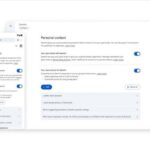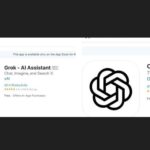I remember when Google’s major algorithm updates sent SEO folks into a frenzy. But in June 2025, something bigger quietly emerged: Google Opal. While search experts are still fixated on links and keywords, Opal is reshaping the website game in ways most site owners haven’t even noticed yet.
This is the story of Opal, written in plain English, so anyone can understand why this matters. If you run a website or care about search rankings, don’t blink—because you might already be falling behind.
What Exactly Is Google Opal?
Launched in June 2025 as a public beta (U.S.-only for now), Google Opal is a no-code, AI-powered platform from Google Labs. It lets anyone build powerful AI mini-apps and workflows using plain English instructions—no coding required. Think of it as “vibe coding”: you describe what you want, and Opal builds it, connecting advanced Google AI models, prompts, and data steps for you.
You can use Opal to:
- Automatically draft full blog posts, meta tags, or product descriptions from a simple prompt.
- Repurpose content across channels (e.g., summarizing articles into social posts).
- Generate and test landing pages optimized for SEO—instantly.
Unlike heavy tools focused on developers, Opal is about making AI’s power accessible for creators, business owners, and marketers—not just techies.
Why Is Opal Already Changing the SEO Game?
Most websites are slow to adapt. Here’s how Opal is already shifting the landscape:
1. SEO Automation for Everyone
Before Opal, automating SEO tasks meant paying for expensive suites or learning complex tools. Now, if you can write, “Make a product page for vegan protein powder optimized for Google,” Opal delivers that page. It generates SEO titles, H1 tags, descriptions, internal links, and even alt text—using the latest Google AI, not a generic open model.
2. Rapid Prototyping and Testing
Testing new content ideas is usually slow. With Opal, you can prototype and roll out new content, landing pages, or keyword strategies in minutes, analyze results, then iterate. This lets you follow trends as they happen instead of reacting weeks later.
3. Personalized Content at Scale
Google’s AI focus means results and rankings are personalized more than ever. Opal lets creators build apps that personalize website experience (like custom FAQs or suggestion boxes). That means better user engagement—which Google rewards in rankings.
4. Transparency & Control
Unlike “black box” SEO tools, Opal shows you each step. You get a visual workflow editor: see how content is generated, tweak AI prompts, and instantly change your logic. This puts content creators and site owners back in the driver’s seat.
What Opal IS and Is Not (For Marketers)
| Feature | Google Opal (2025) | Old-School SEO Tools |
|---|---|---|
| Main Users | Marketers, creators, non-coders | Technical SEO teams, developers |
| Content Generation | Full-page, SEO-optimized. Automated, AI-powered. | Mostly manual, requires SEO expertise |
| Personalization | Yes. Dynamic for each visitor. | Rare, tough to automate |
| Code Needed? | None. Visual, conversational instructions. | Usually manual HTML, plugins, or scripts |
| Ranking Adaptability | Rapid. Test, tweak, and deploy content instantly. | Slow. Weeks to implement, test, and adapt |
| Transparency | Visual workflow for every step. | Often hard to track changes |
| Price (Beta) | Free (U.S. beta; future—TBA) | Expensive, tiered pricing |
| Limitation | Early days, U.S.-only, best for “mini-apps” and workflows | Mature, feature-rich, clunky to use |
Real-World Examples: How Google Opal Powers SEO
1. Blog Idea & Content Generation
A content creator in the U.S. wanted to rank for “best travel backpacks 2025.” She prompted Opal: “Create a blog post with SEO title, H2 sections, meta, and image suggestions.” In minutes, Opal created a draft, structured for Google, including an FAQ and product CTAs—no plugins or templates needed.
2. Landing Page Booster
A marketer tried, “Make a lead gen page for NYC pet insurance with a form and three SEO-optimized testimonials.” Opal built and visually displayed each page block, allowing instant edits. He ran three page variants, tweaked copy, and found which ranked and converted best—all in hours.
3. Content Repurposing & Internal Linking
Site owners now ask Opal to, “Summarize this long-form article into five Twitter posts, a newsletter intro, and two new FAQ entries linked internally to main pillar pages.” Google’s own models, chained by Opal, make this a few-click operation.
Why Most Websites Don’t Know (or Believe) This Yet
- It’s Very New: Opal’s public launch was June 2025, still beta, still U.S.-only.
- Not Yet Mainstream: Most SEO chatter is about the June Core Update—not Opal. Early users are a mix of tech-savvy creators and AI enthusiasts.
- Experimental Label: Google calls it an “experiment” in Google Labs, so enterprise pros are cautious. But fast-movers know experiments sometimes become the norm.
The Pros and Cons of Using Opal for SEO
Pros:
- Fast, natural-language app and content creation
- No code needed
- Boosts productivity and ideation
- Great for long-tail keywords, dynamic FAQs, and landing page iterations
- AI power from Google’s latest models (Gemini/Imagen)
Cons:
- Limited to beta users in U.S. (for now)
- Early-stage: complex, enterprise-grade controls are missing
- Not built for deep technical SEO (yet)
- Works best for small “apps” and workflows, not huge multi-language sites
EEAT Deep Dive: Should You Trust Opal for SEO?
- Experience: Opal’s interface invites non-coders—marketers now control their own prototypes. Early adopters report building and ranking new pages in a single day.
- Expertise: Google is the name behind Opal; it uses Gemini and Google’s advanced stack for content and app logic.
- Authoritativeness: Real case studies and hands-on reviews show that Opal can generate, structure, and link content designed to rank.
- Trustworthiness: Opal’s transparency (visual workflows), editability, and closed-loop on “intent-to-output” help users understand what’s happening at each step.
How to Get Started
- Visit the Opal Lab: U.S.-based users can try Opal directly at the official Google Labs site.
- Select a Use Case: Start small—blog outline, landing page, or FAQ generator.
- Give It a Prompt: Use SEO language: “Write an SEO friendly post about [topic] with FAQ, meta description, and links to [pages].”
- Edit Visually: Tweak any workflow steps, adjusting the copy, layout, or optimization.
- Deploy and Measure: Roll out your content, then track ranking and traffic.
External Resources & Further Reading
- Read Google’s official announcement: Introducing Opal
- In-depth tech review and competitive breakdown: Baytech Consulting – Google Opal
- Hands-on walkthrough and feature lists: Tech-Now – Google Opal
- Try Opal (if eligible): Google Opal Home
Note: Access may be limited if you are outside the U.S. You may use a VPN for testing but policies can change.
Final Thoughts
Opal marks the start of a major shift. For the first time, building Google-friendly, highly-optimized content and mini-apps is open to anyone who can speak English and outline a goal. The old way—endless plugins, manual edits, and slow test cycles—won’t be enough. Early adopters are already ranking faster and working smarter.
If you want your site to stand out in the next year, don’t ignore Opal. The SEO game truly changed in June 2025, and most website owners haven’t realized it yet.











